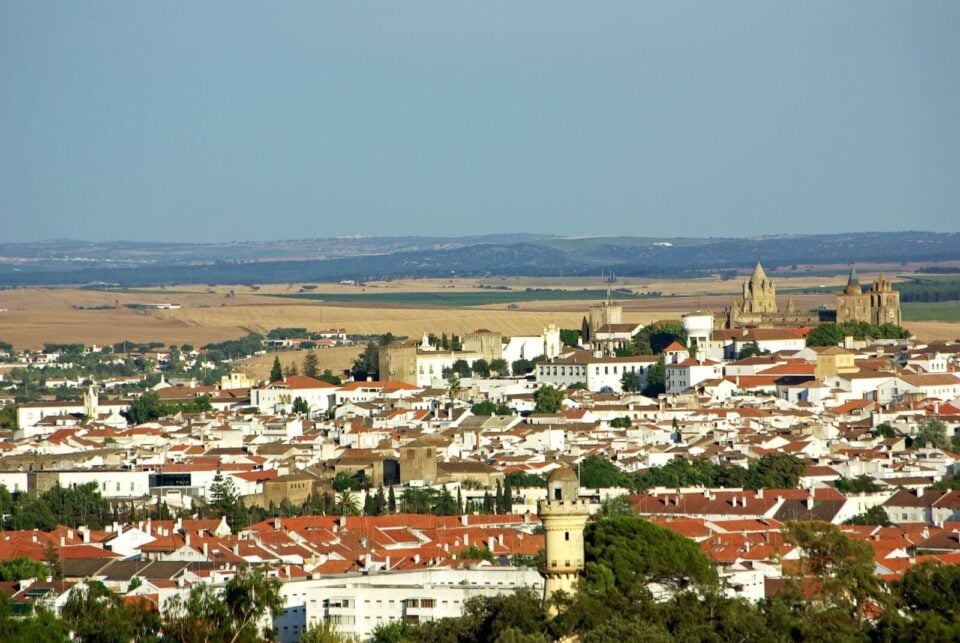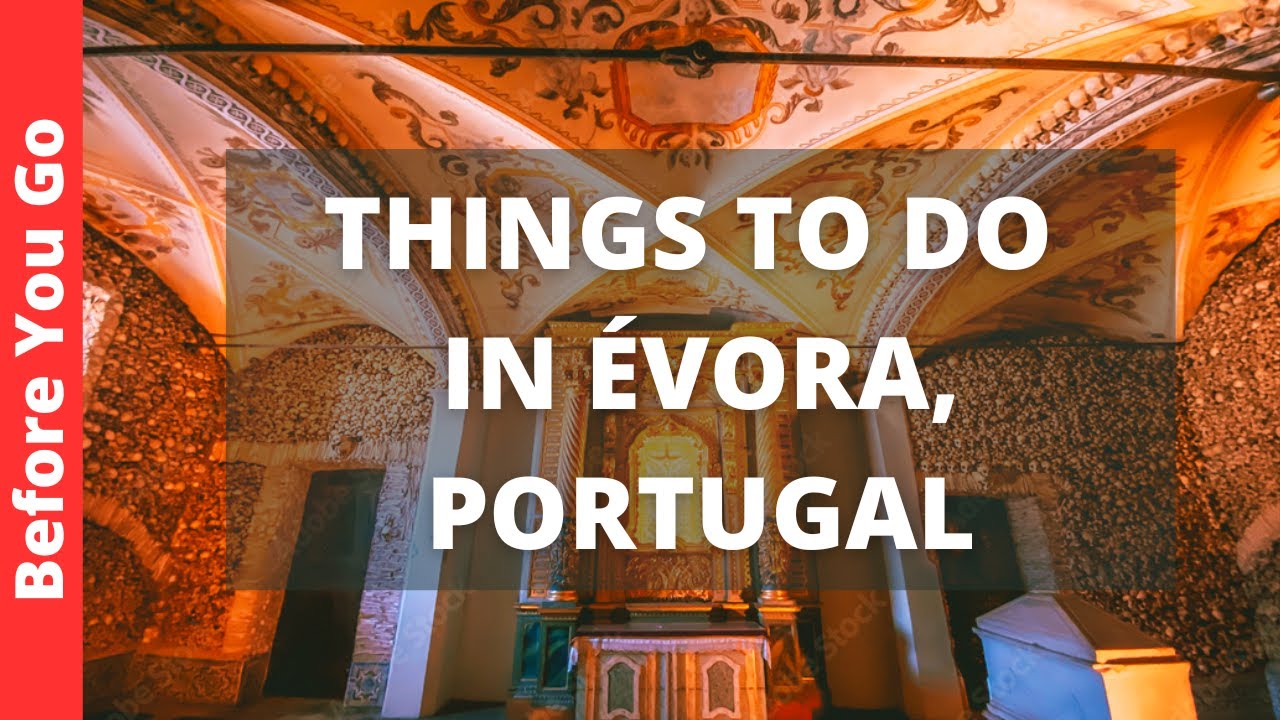Evora (Portugal) is rightfully included in the list of the most beautiful cities in the country. A walk through its center will take you to the distant past, envelop you in the atmosphere of rapidly changing historical eras. The city’s architecture was influenced by Moorish and Roman cultures. Hundreds of thousands of tourists come to Evora every year to drink fine wine and taste local cheeses and sweets. Residents call Evora the spiritual center of Portugal.
General information
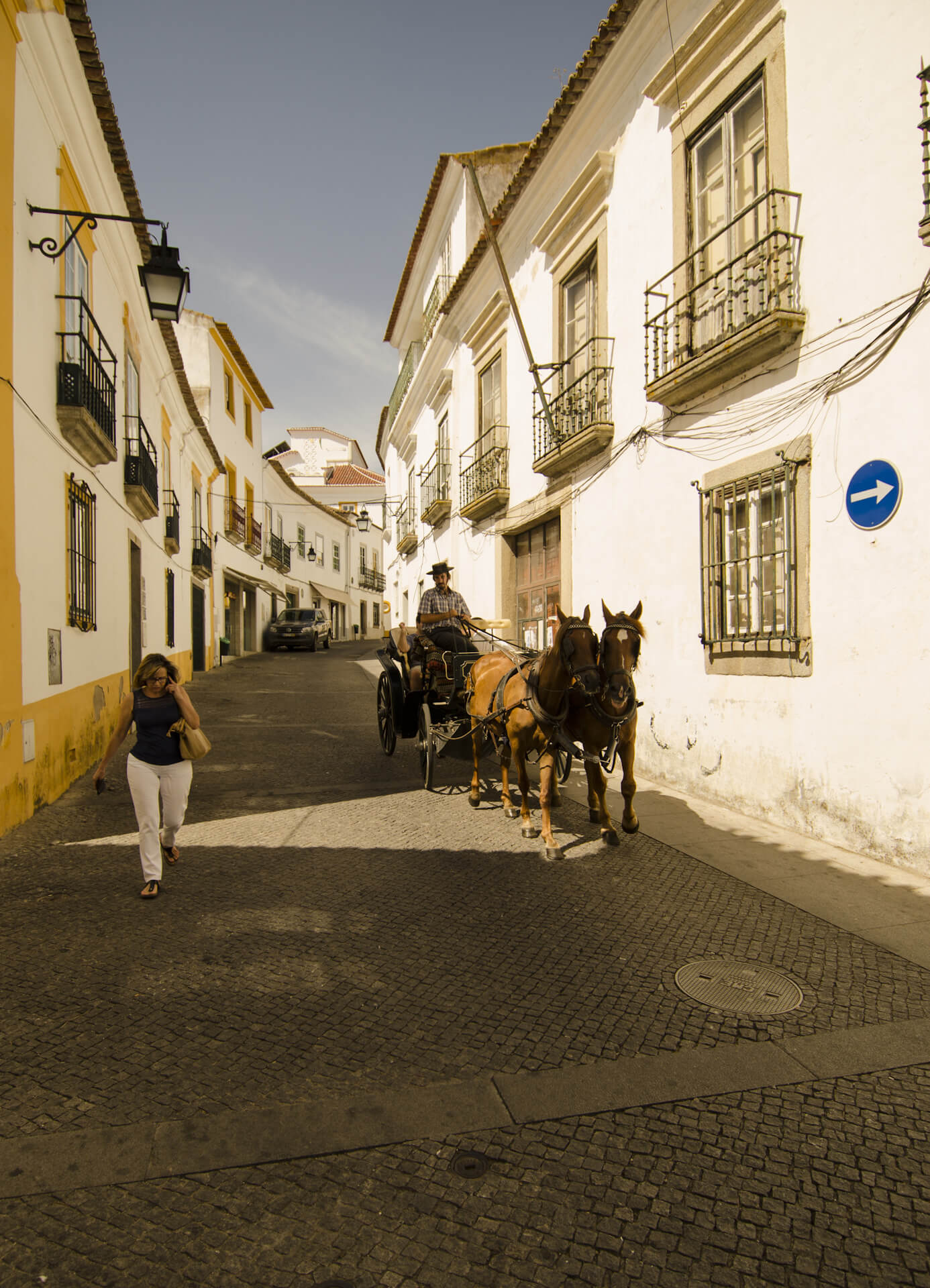
The city is comfortably located in the central part of Portugal in the province of Alentejo. It is home to a little more than 55 thousand people (together with the suburbs). Evora is the center of a county and municipality with similar names. The main funds in the region’s economy come from the agricultural sector.
Just 110 km from the capital is an oasis of olive groves, vineyards and meadows. You will find yourself in a maze of narrow streets, walk among old houses, admire fountains. Evora is recognized as a museum city, where each stone keeps its own fascinating history.
Historical background
The settlement was founded by the Lusitanians, its first name is Ebora. Initially, the city was the residence of the general Sertorius. Since the 5th century AD, bishops have been located here.
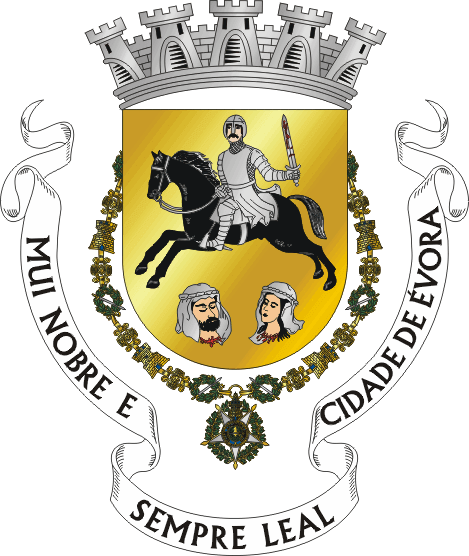
In 712, the city was ruled by the Moors, who called the settlement Jabura. To recapture Evora, the monarch of Portugal founded the Order of Knights of Avisa, who settled in the city when the Moors were driven out.
In the 15th and 16th centuries, Evora was the seat of the ruling royal family. This period is called the golden age. Then it was occupied by the Spaniards, after which the city lost its former significance. The main event of the 19th century – the complete surrender of the monarch Miguel and the end of civil strife.
What to see
Historical center
Evora is a museum city with residential areas that were built from the 15th to the 18th centuries, old houses decorated with tiles and wrought iron. The special ancient architecture is most clearly felt in the central part of the city, which is included in the list of UNESCO World Heritage Sites.

In an amazing way, Evora has maintained a charming appearance for several millennia, which was formed under the influence of many cultures. New neighborhoods are being built in such a way as not to violate the historical heritage of the Romans, Moors, and Lusitanians.
Many of Evora’s attractions are located in the city center. The list of the most significant includes the Cathedral of Ce, the palaces of Vasco da Gama and Monarch Manuel, the Temple of Diana, churches, chapels. All historical monuments are perfectly preserved.
There is a bus service from Sete Rios Station in the Portuguese capital to Evora city center. You can also arrive by car, following the A2 highway, then turn onto the A 6 and A 114 highways.
Chapel of Bones Drained
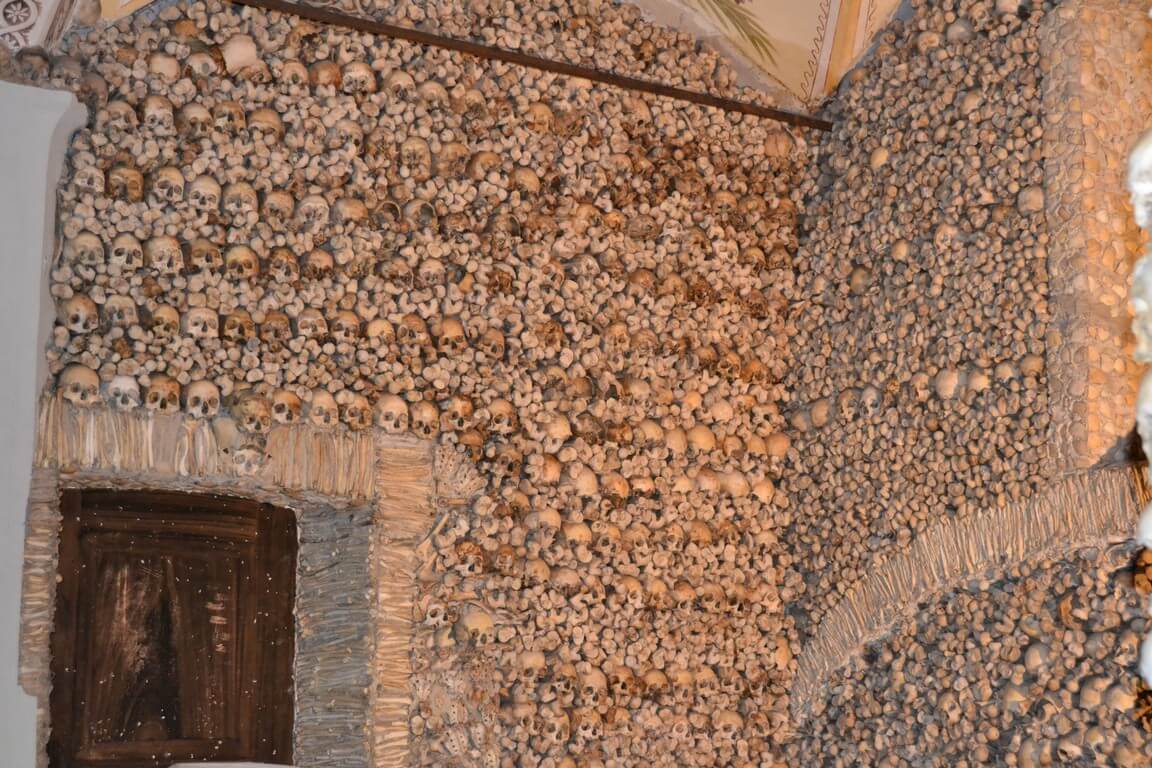
Another bright and slightly frightening attraction of Evora (Portugal) is the Chapel of Bones, which is part of the complex of the Church of St. Francis. Inside the shrine are collected bones and skulls belonging to 5 thousand monks.
The building symbolizes certain death, and was built after the terrible plagues and military events that caused thousands of deaths. The arch of the chapel is crowned with an inscription: our bones rest here, we wait for yours.
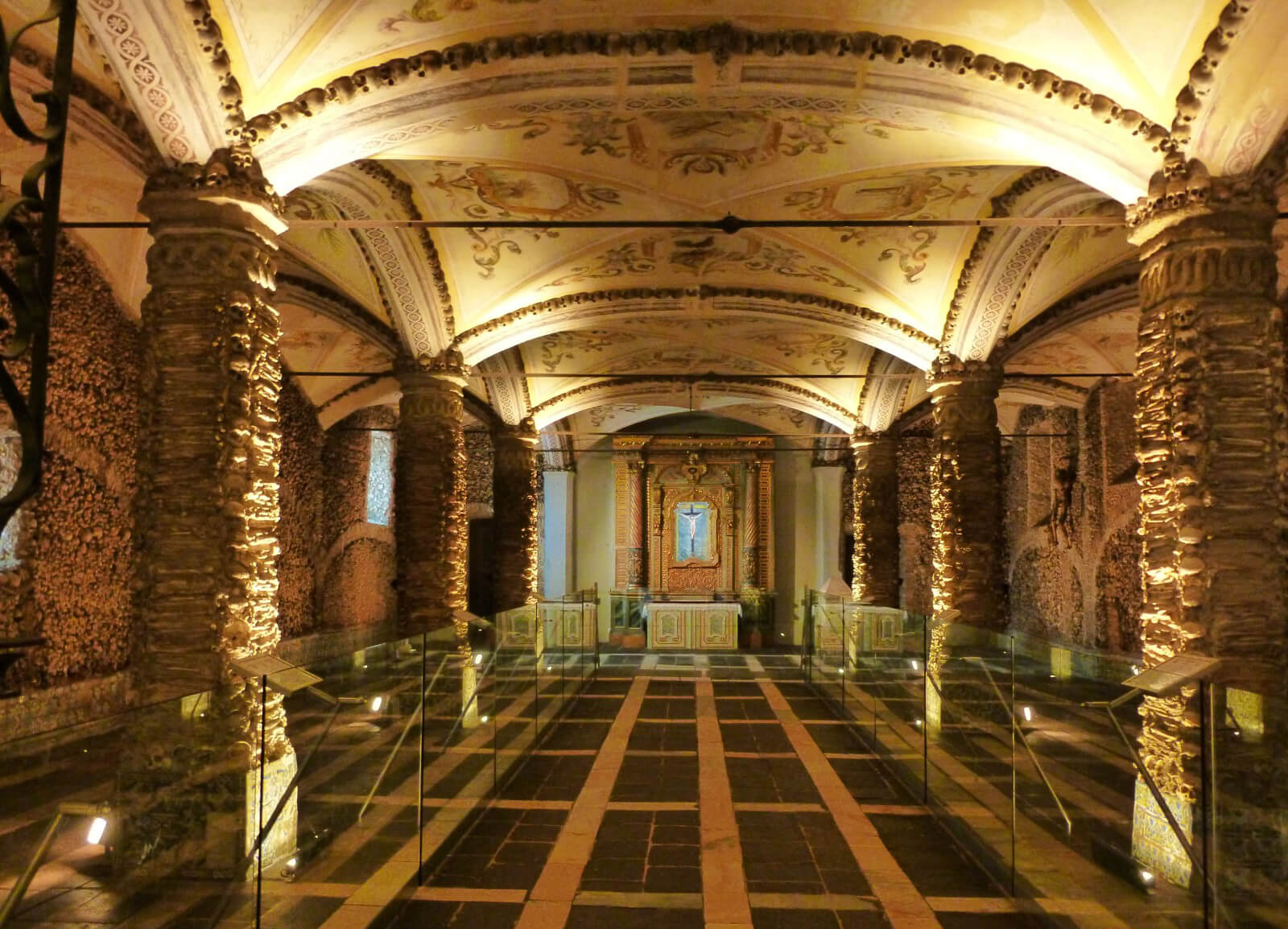
Interesting fact! To keep the bones white, they were treated with slaked lime. Deformed and broken bones were ground and mixed with cement.
- The chapel is located at: Praca 1º de Maio, 7000-650 Sã o Pedro, Evora.
- Opening hours: in summer-from 9: 00 to 18: 30, in winter – from 9: 00 to 17: 00.
- Ticket prices: 5€ for adults, 3.5€ for children, young people under 25 and seniors over 65.
Cathedral of Ce
The shrine began to be built at the beginning of the 12th century, and was completed only in 1250. The cathedral is decorated in Romano-Gothic style and is recognized as the most attractive and largest medieval cathedral in Portugal. It is home to the oldest functioning Portuguese organ, built in the 16th century. Inside, the cathedral is decorated with different types of marble.
It is noteworthy that inside there is a sculpture of the pregnant Virgin Mary. Since there is an official ban of the Pope on any images of a nursing or pregnant Virgin, such a figure is unlikely to be seen anywhere else.
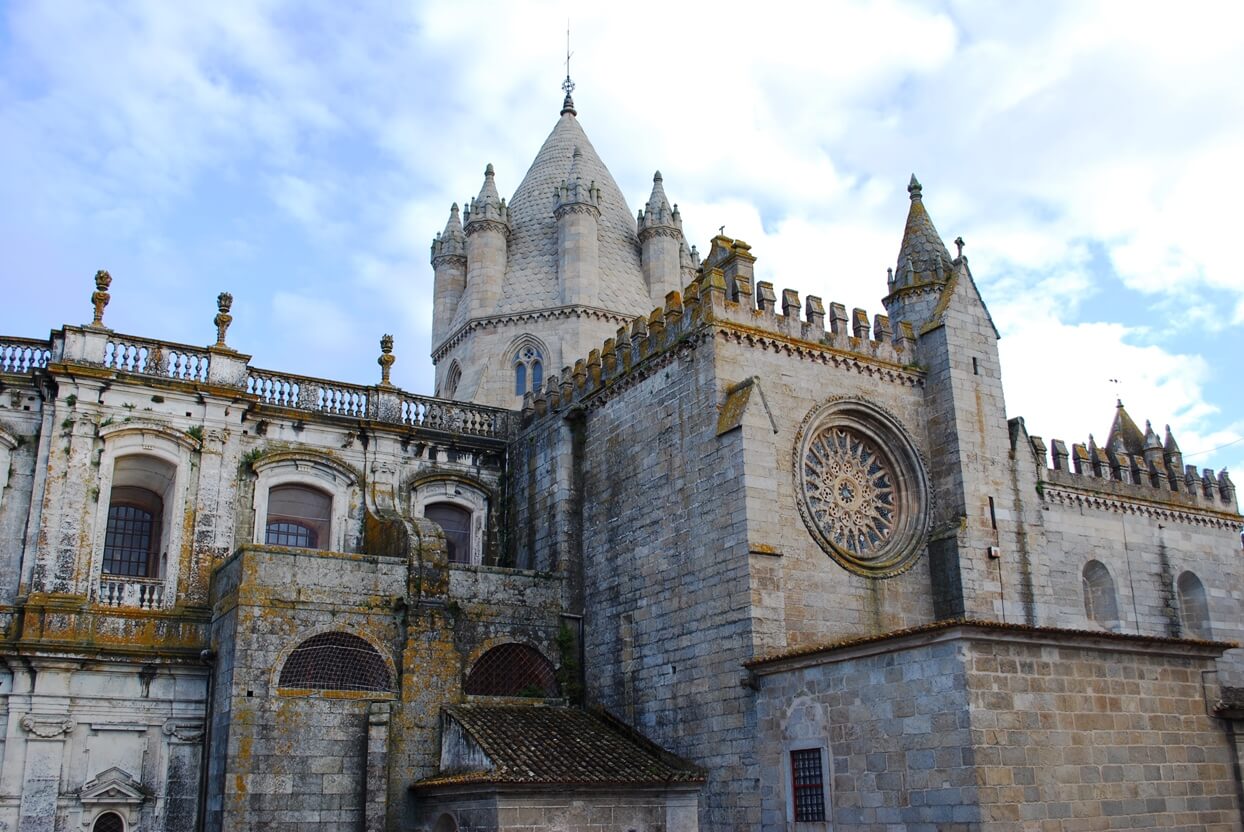
Outside, the shrine is decorated with two towers and sculptures. In one of them there is a museum of religion, where the clothes of priests, their household items and church utensils are presented.
Interesting fact! Vasco da Gama used to come here for a blessing when he was going on a famous trip to India. Ships and banners were consecrated in the temple.
- The cathedral is located at Largo do Marques de Marialva, Evora 7000-809 Portugal.
- Entrance fee: 4,5€ full ticket, includes a visit to the cathedral, the museum attached to it and the observation deck. Discounts are available for seniors and children.
- Opening hours: 9: 00-17: 00.
- Website: http://www.evoracathedral.com.
Almendrish Cromlech
It is considered the largest on the Persian Peninsula and is included in the list of the largest in all of Europe. The cromlech has almost 100 stones, according to historians and archaeologists, it was created in the 5-6 centuries BC. e. The place is ancient and during its existence some of the stones were lost. According to one version, the cromlech was a temple of the Sun.
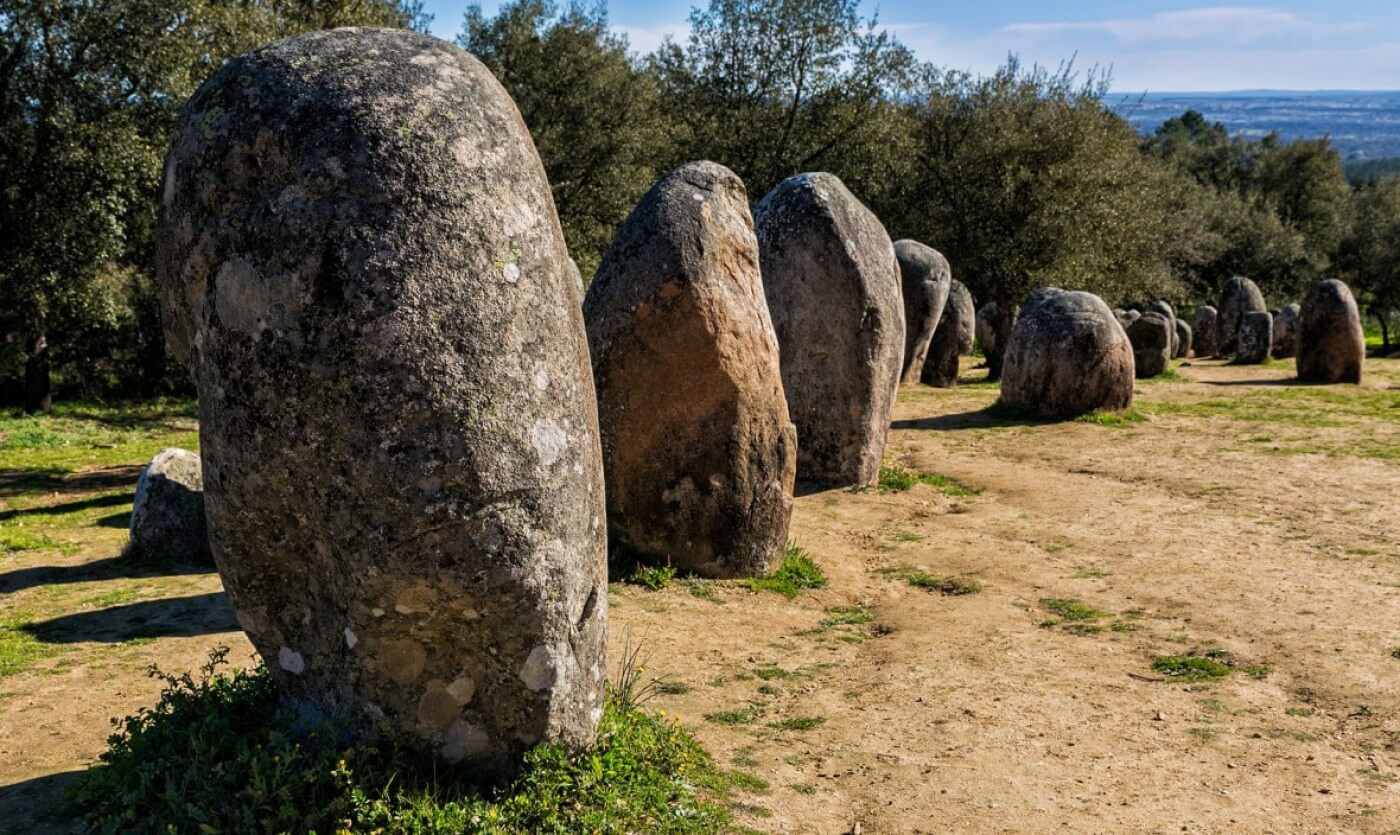
Cut drawings were found on 10 stones (menhirs). In the north-east direction from the complex there is a single stone with a height of 2.5 meters. Historians still don’t agree on what it means. Some believe that the menhir is a signpost, according to another version-there are other menhirs in other places.
There is a parking lot near the cromlech. It is better to arrive in the evening and choose clear weather, because in the rain the country road is blurred. It is easy to find the road – there are signs along the route. There is not much information on the Internet, but the reviews of tourists are unanimous – the place fascinates and delights, you don’t want to leave here.
Place of interest: Recinto Megalitico dos Almendres, near Nossa Senhora de Guadalupe, 15 km from Evora.
The fortress wall of Fernandina
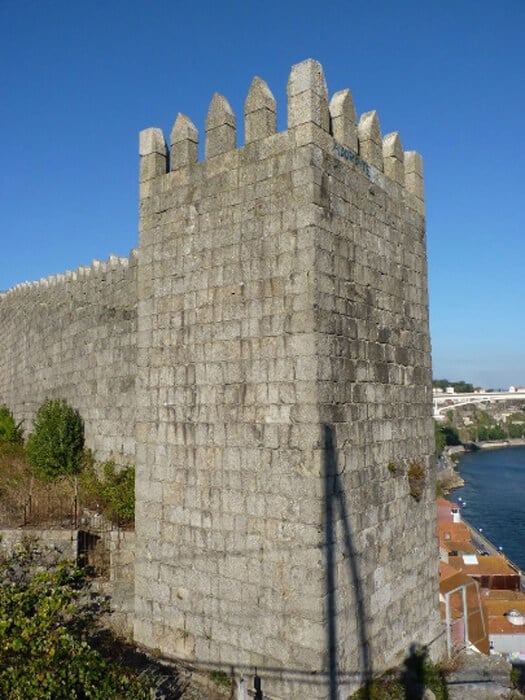
It was built in the 14th century. For the period of the Middle Ages, the structure was considered grandiose, but today tourists can visit and see only the surviving fragments of the fortress wall. Construction work began in 1336 by the decision of the monarch Alfonso I. The fortress structure replaced the old wall, which could no longer provide protection for the city, which was growing. Construction was completed 40 years after it began during the reign of Monarch Ferdinand, and the structure is named after him.
The height of the walls of the attraction is almost 7 meters, but according to some sources-9 meters, their thickness is 2.2 meters. The wall has 17 gates made of stone and metal. The length of the structure reached 3.4 km. For greater reliability and strength, the wall was complemented by towers, there were about 30 of them.
Interesting to know! In the 18th century, the need to protect the city disappeared, so the walls were partially destroyed to expand the streets. The remaining remains of the structure in Evora are included in the list of national monuments of Portugal.
Giraldo Central Square
A typical Portuguese square, designed in a modern style. Locals and tourists like to walk here. In the center of the square there is a fountain, eight streams of which symbolize the eight streets that adjoin it. The fountain was built in 1571 from marble and is crowned with a bronze crown. There are many places on the square where you can have a delicious meal and admire the local beauty.
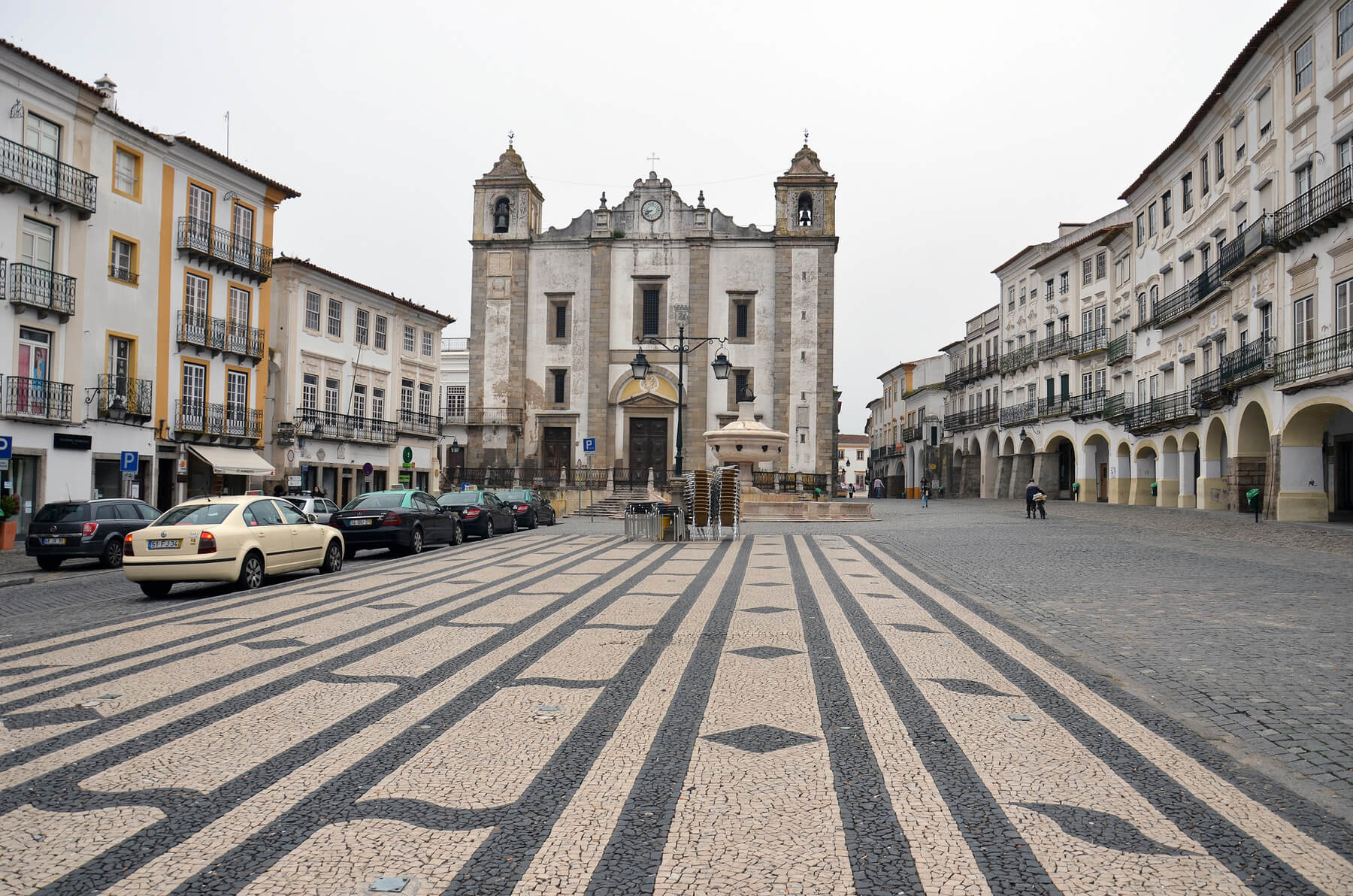
On a note! The square’s past is sad and a little scary. Initially, executions were carried out here. For two centuries, the cruel sentences of the Inquisition were carried out here. More than 20 thousand people were executed on the square.

The square is located in the central district of the city. It is worth coming here to walk along the paved tiles, drink a cup of aromatic coffee, and enjoy the picturesque nature. In the northern part of the square stands the church of Santo Antau, built in the 16th century, in the south is the bank. Entertainment events are regularly held on the square – there is a charity market, a Christmas tree is installed on Christmas Eve. In the evening, the square is particularly magical – colorful stones bathed in moonlight create an amazing impression.
St. Francis Church

The most visited church in the city is listed as a UNESCO World Heritage Site. The construction of the temple lasted three decades – from 1480 to 1510. Previously, there was a church built in the 12th century by the Franciscan order. In the 15th century, the church was reconstructed – the structure is made in the form of a cross and decorated in the Gothic style. A chapel was built at the temple for representatives of the royal family, since nobles often visited here.
Please note! The entrance is decorated with a sculpture of a pelican-the emblem of Monarch Joao II.
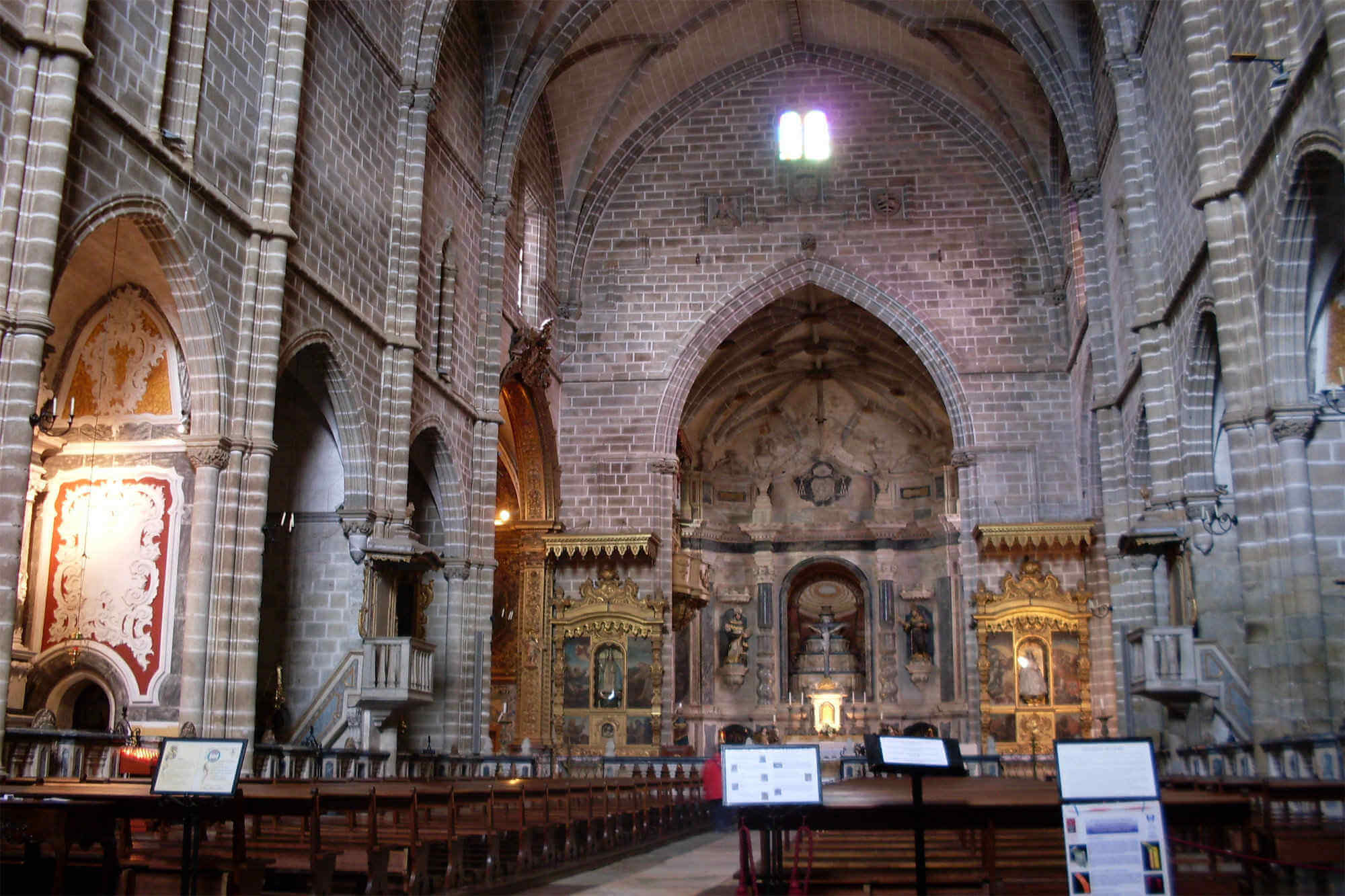
The architectural design of the church provides for 10 chapels, undoubtedly the most popular of them is the Chapel of bones. Each chapel has an altar. The main marble altar dates back to the 18th century. Inside, the church looks luxurious-decorated with stucco, drawings with a biblical story, tiles. The church also has a Baroque organ dating back to the 18th century.
At the beginning of the 19th century, the church was nationalized and until the beginning of the 20th century, the city court worked in the building. The most extensive reconstruction was carried out several years ago, and more than 4 million euros were allocated for it. The temple has a museum with an impressive collection of works on religion. In the church there is an exhibition consisting of 2,6 thousand images of the Holy Family and various nativity scenes from different countries.
University of Evora
At a time when the city of Evora in Portugal was revered by monarchs, a university was opened here, where local and European masters were educated. Many creative people flocked here for a portion of inspiration.
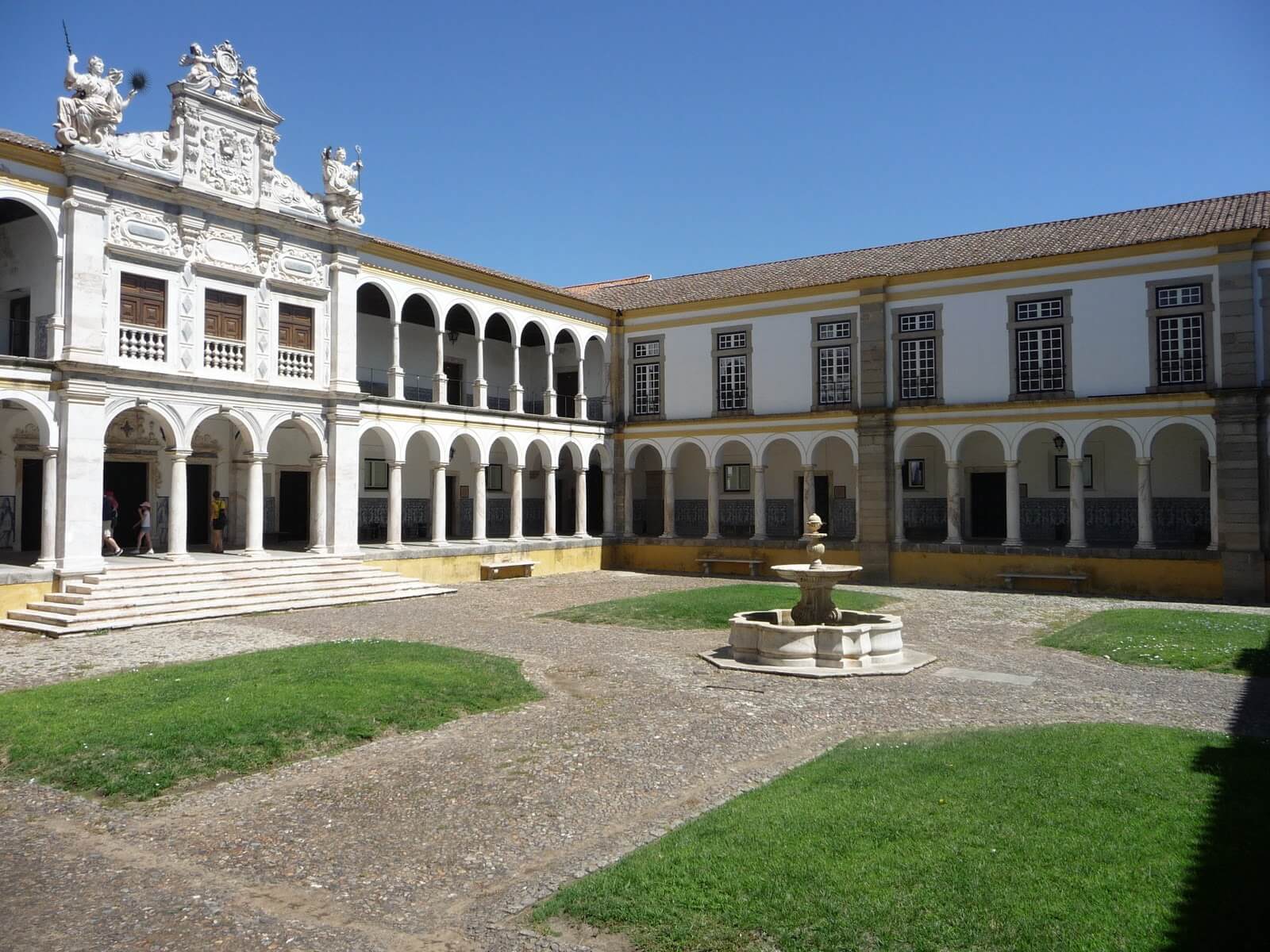
In 1756, the university was closed because its founder, the Jesuits, was expelled from the country. This happened as a result of disagreements between the Marquis de Pombale and the representatives of the order, who divided the zones of influence not only in Evora, but throughout Portugal. At the end of the 20th century, the university started its activity again.
University address: Largo dos Colegiais 2, 7004-516 É vora.
How to get there
There are four ways to get to Evora from Lisbon.
By train
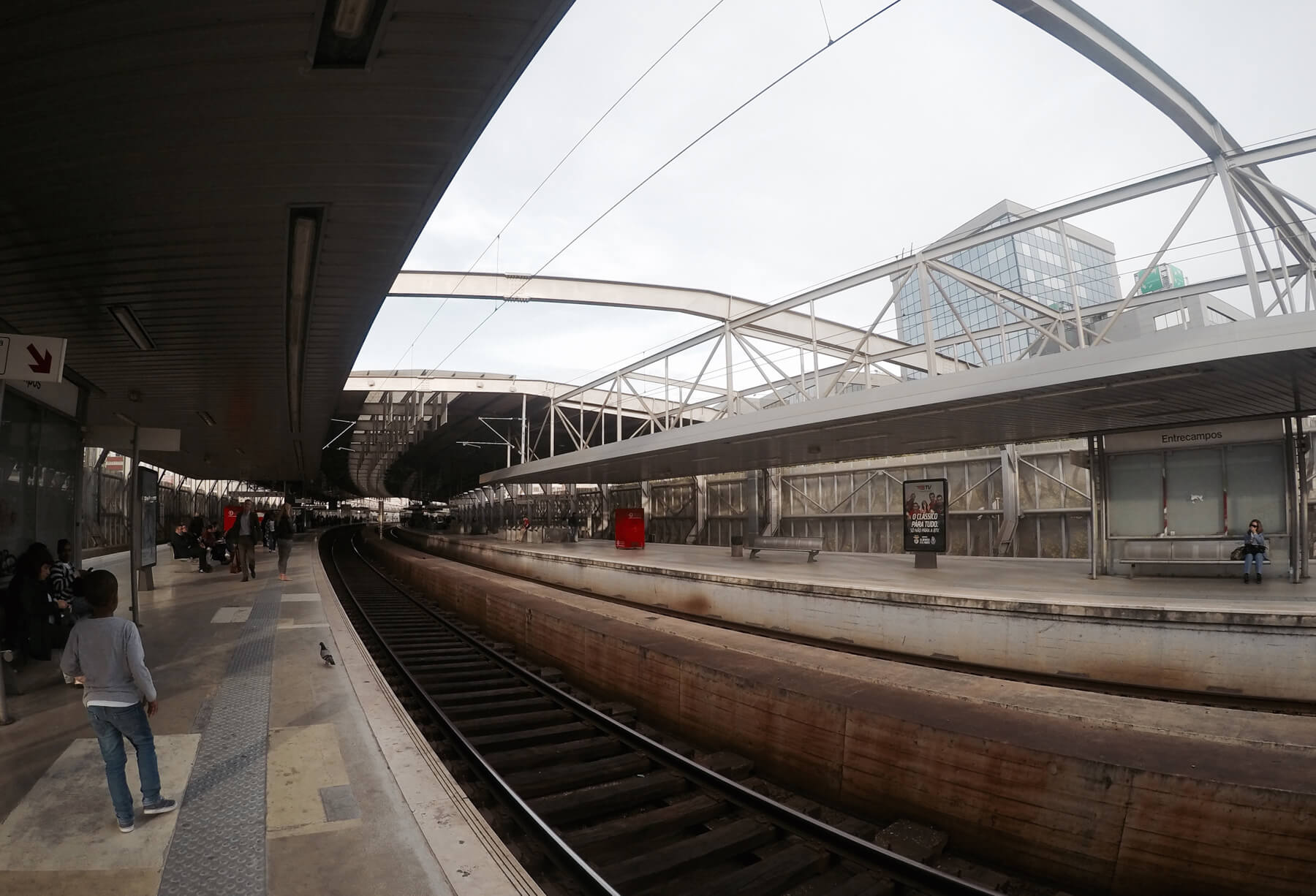
The journey takes about 1.5 hours, the ticket price is from 7.5-16.5 euros, depending on the class of the car and the availability of promobilets. Trains depart 4 times a day, and you can get on at Lisboa Oriente and Entrecampos stations. Travel time is 1 hour and 40 minutes. Evora is served by Portuguese Railways trains. You can find out the exact schedule and buy tickets on the official website of the carrier — https://venda.cp.pt.
By bus
The journey takes 1 hour and 45 minutes, the full ticket price is 11.90 €, and discounts are provided for students, children and pensioners. Flights depart every 15-60 minutes. Evora is served by Rede Expressos buses from Lisboa Sete Rios Bus Station.
View the current schedule and buy tickets on the carrier’s website www.rede-expressos.pt.
Taxi
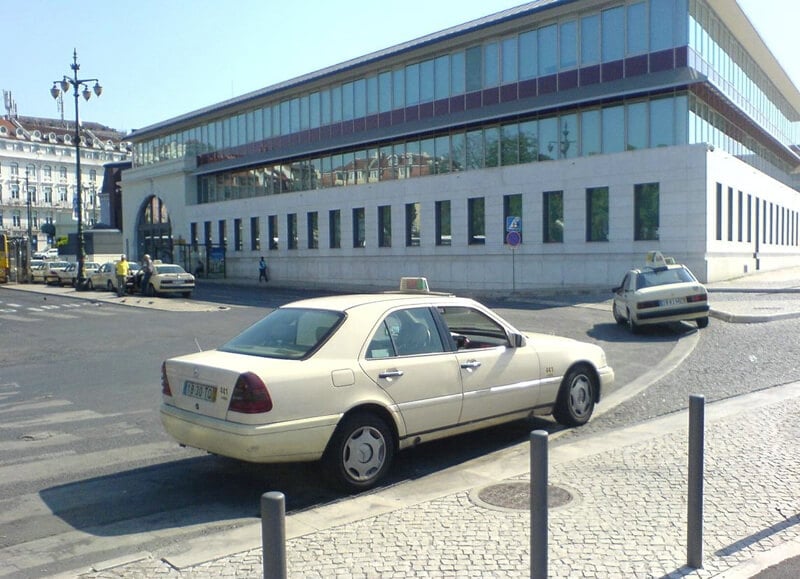
You can book a transfer from the airport or hotel in Lisbon. The cost of the trip is from 160 to 220 euros.
Evora (Portugal) – an ancient city that was under the influence of the Moorish, experienced a golden period, when royal weddings were held here magnificently. Evora is a center of creativity and spirituality, where famous masters of Portugal, Spain and Holland worked. To experience the incredible atmosphere of the city, you need to walk through the streets, go to the souvenir shops and visit the sights that are fraught with many wonderful stories.
Albufeira Travel Guide: Exploring the Best of Portugal’s Southern Coast

